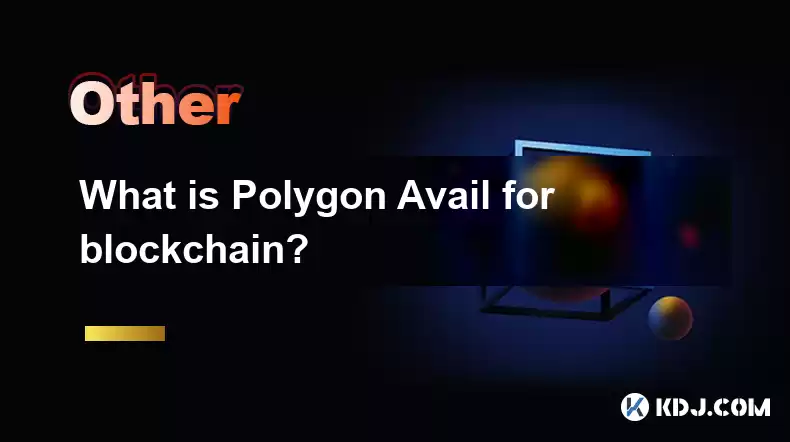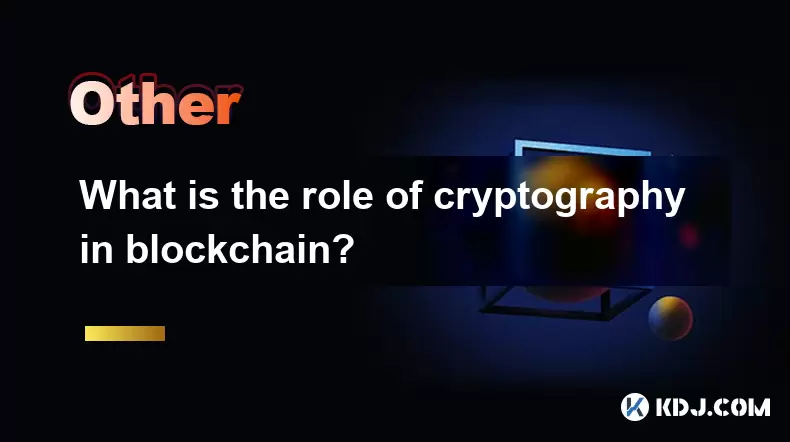-
 Bitcoin
Bitcoin $113900
0.47% -
 Ethereum
Ethereum $3491
-0.42% -
 XRP
XRP $2.876
-1.87% -
 Tether USDt
Tether USDt $1.000
0.03% -
 BNB
BNB $750.4
-0.49% -
 Solana
Solana $161.3
-1.76% -
 USDC
USDC $0.9999
0.01% -
 TRON
TRON $0.3242
-0.91% -
 Dogecoin
Dogecoin $0.1985
-0.19% -
 Cardano
Cardano $0.7241
1.49% -
 Hyperliquid
Hyperliquid $38.05
0.56% -
 Stellar
Stellar $0.3896
2.92% -
 Sui
Sui $3.442
0.61% -
 Chainlink
Chainlink $16.18
0.92% -
 Bitcoin Cash
Bitcoin Cash $541.0
0.51% -
 Hedera
Hedera $0.2427
2.67% -
 Ethena USDe
Ethena USDe $1.001
0.03% -
 Avalanche
Avalanche $21.39
-0.68% -
 Toncoin
Toncoin $3.669
2.25% -
 Litecoin
Litecoin $109.5
0.95% -
 UNUS SED LEO
UNUS SED LEO $8.966
0.11% -
 Shiba Inu
Shiba Inu $0.00001218
0.77% -
 Polkadot
Polkadot $3.598
1.23% -
 Uniswap
Uniswap $9.164
1.14% -
 Monero
Monero $297.7
1.21% -
 Dai
Dai $1.000
0.00% -
 Bitget Token
Bitget Token $4.328
0.84% -
 Pepe
Pepe $0.00001047
1.05% -
 Cronos
Cronos $0.1329
0.70% -
 Aave
Aave $257.6
1.03%
What is Polygon Avail for blockchain?
Polygon Avail enhances blockchain scalability and interoperability by providing a modular data availability layer, benefiting developers and users alike.
Apr 14, 2025 at 01:42 am

Polygon Avail is a significant component of the Polygon ecosystem, designed to enhance scalability and interoperability within the blockchain space. As a modular data availability solution, Polygon Avail aims to provide a robust framework for developers to build and scale their blockchain applications efficiently. In this article, we will delve into what Polygon Avail is, how it functions, its key features, and its impact on the broader blockchain ecosystem.
What is Polygon Avail?
Polygon Avail is a data availability layer designed to be compatible with various blockchain networks. Data availability is a crucial aspect of blockchain technology, ensuring that all necessary data for transaction validation and execution is accessible to all participants in the network. Polygon Avail specifically targets the scalability challenges faced by many blockchains by providing a dedicated solution for data availability.
How Does Polygon Avail Work?
Polygon Avail operates as a standalone layer within the Polygon ecosystem, focusing on ensuring that data is readily available for validation and execution. It achieves this by:
- Storing Data: Polygon Avail stores transaction data in a manner that is accessible and verifiable by all nodes on the network.
- Verification: Nodes can independently verify the availability of data, ensuring the integrity and security of the blockchain.
- Interoperability: By being modular, Polygon Avail can be integrated with different blockchains, enhancing their scalability without requiring significant changes to their core protocols.
This approach allows developers to leverage Polygon Avail's capabilities to build more scalable and efficient blockchain applications.
Key Features of Polygon Avail
Polygon Avail comes with several features that make it a valuable addition to the blockchain ecosystem:
- Modularity: One of the standout features of Polygon Avail is its modular design. This allows it to be easily integrated with various blockchains, providing a flexible solution for data availability.
- Scalability: By offloading the data availability task to a dedicated layer, Polygon Avail helps improve the overall scalability of blockchain networks. This is particularly beneficial for networks that face limitations due to high transaction volumes.
- Security: The data stored on Polygon Avail is secured through cryptographic means, ensuring that it remains tamper-proof and verifiable.
- Interoperability: Polygon Avail's ability to work with different blockchains enhances interoperability, allowing for seamless data sharing and collaboration across different networks.
Benefits of Using Polygon Avail
The adoption of Polygon Avail brings several benefits to developers and users within the blockchain ecosystem:
- Enhanced Scalability: By separating the data availability layer from the execution layer, Polygon Avail allows blockchains to process more transactions per second, improving their overall performance.
- Reduced Costs: With improved scalability comes reduced costs, as the network can handle more transactions without the need for extensive hardware upgrades.
- Improved User Experience: Faster transaction processing and lower fees contribute to a better user experience, making blockchain applications more appealing to a wider audience.
- Increased Flexibility: Developers can build on top of existing blockchains without worrying about data availability constraints, allowing for more innovative and complex applications.
How to Integrate Polygon Avail with Your Blockchain
Integrating Polygon Avail with an existing blockchain involves several steps. Here’s a detailed guide on how to do it:
- Understand the Requirements: Before starting the integration process, it’s essential to understand the specific requirements of your blockchain and how Polygon Avail can address them. This includes assessing the current data availability solutions and identifying areas where Polygon Avail can provide improvements.
- Set Up the Environment: Ensure that your development environment is set up correctly. This includes having the necessary software and tools to interact with Polygon Avail. You may need to install specific libraries or SDKs provided by Polygon.
- Configure the Integration: Use the Polygon Avail SDK to configure the integration with your blockchain. This involves setting up the connection between your blockchain and Polygon Avail, ensuring that data can be seamlessly transferred and verified.
- Test the Integration: Before deploying the integration in a live environment, it’s crucial to test it thoroughly. This includes running simulations and stress tests to ensure that the integration works as expected under different conditions.
- Deploy and Monitor: Once the integration is tested and validated, deploy it on your blockchain network. Monitor the performance and make any necessary adjustments to ensure optimal operation.
Use Cases of Polygon Avail
Polygon Avail can be applied in various scenarios within the blockchain ecosystem. Some notable use cases include:
- Layer 2 Solutions: Polygon Avail can be used to enhance the scalability of Layer 2 solutions, such as rollups and sidechains, by providing a robust data availability layer.
- Decentralized Finance (DeFi): In the DeFi space, where high transaction volumes are common, Polygon Avail can help improve the efficiency and scalability of DeFi protocols, leading to faster and cheaper transactions.
- Gaming and NFTs: Blockchain-based gaming and non-fungible tokens (NFTs) can benefit from Polygon Avail’s scalability features, allowing for smoother and more efficient interactions within these ecosystems.
- Enterprise Blockchain: For enterprise applications, where scalability and data integrity are critical, Polygon Avail can provide a reliable solution for managing large volumes of data securely.
Frequently Asked Questions
Q: Can Polygon Avail be used with any blockchain network?
A: Yes, Polygon Avail is designed to be modular and can be integrated with various blockchain networks. Its flexibility allows it to work with different protocols and architectures, making it a versatile solution for data availability.
Q: How does Polygon Avail ensure the security of stored data?
A: Polygon Avail uses cryptographic techniques to secure the data stored on its layer. This ensures that the data remains tamper-proof and can be verified by all nodes on the network, maintaining the integrity and security of the blockchain.
Q: What are the main challenges in integrating Polygon Avail with existing blockchains?
A: The main challenges include understanding the specific requirements of the existing blockchain, setting up the necessary development environment, and ensuring seamless data transfer and verification between the blockchain and Polygon Avail. Thorough testing is also crucial to address any potential issues before deployment.
Q: Are there any costs associated with using Polygon Avail?
A: While Polygon Avail itself does not impose direct costs, the integration process may involve some expenses, such as setting up the development environment and conducting thorough testing. Additionally, the operational costs of running a blockchain network with Polygon Avail may vary depending on the specific use case and network requirements.
Disclaimer:info@kdj.com
The information provided is not trading advice. kdj.com does not assume any responsibility for any investments made based on the information provided in this article. Cryptocurrencies are highly volatile and it is highly recommended that you invest with caution after thorough research!
If you believe that the content used on this website infringes your copyright, please contact us immediately (info@kdj.com) and we will delete it promptly.
- Altcoins Most Searched: Hedera (HBAR) and the ETF Hype
- 2025-08-03 20:50:16
- Arbitrage Adventures: Creditcoin, Kaspa, and Chasing Crypto Profits
- 2025-08-03 20:30:16
- Claude HIVE & Code Agents: Faster Coding Revolution?
- 2025-08-03 20:50:16
- Trump Media, Bitcoin, and Crypto: A Surprising Alliance in the Making?
- 2025-08-03 21:30:16
- Shiba Inu's Bullish Reversal Hopes Amid Market Uncertainty: A Deep Dive
- 2025-08-03 21:30:16
- Shiba Inu's Struggle, Mutuum Finance's Rise, and Key Support Levels: A Crypto Deep Dive
- 2025-08-03 20:55:16
Related knowledge

What is the difference between on-chain and off-chain transactions?
Aug 02,2025 at 04:22pm
Understanding On-Chain TransactionsOn-chain transactions refer to digital asset transfers that are recorded directly on a blockchain ledger. These tra...

What is a node's role in a blockchain network?
Aug 03,2025 at 03:16pm
Understanding the Function of a Node in a Blockchain NetworkA node is a fundamental component of any blockchain network, acting as a participant that ...

What is the double-spending problem and how does blockchain prevent it?
Aug 02,2025 at 01:07pm
Understanding the Double-Spending ProblemThe double-spending problem is a fundamental challenge in digital currency systems where the same digital tok...

What is the difference between a blockchain and a database?
Aug 01,2025 at 09:36pm
Understanding the Core Structure of a BlockchainA blockchain is a decentralized digital ledger that records data in a series of immutable blocks linke...

How does blockchain handle scalability?
Aug 02,2025 at 02:58pm
Understanding Blockchain Scalability ChallengesBlockchain scalability refers to a network's ability to handle an increasing volume of transactions wit...

What is the role of cryptography in blockchain?
Aug 03,2025 at 03:42pm
Understanding the Foundation of Blockchain SecurityCryptography is the cornerstone of blockchain technology, providing the essential tools to ensure d...

What is the difference between on-chain and off-chain transactions?
Aug 02,2025 at 04:22pm
Understanding On-Chain TransactionsOn-chain transactions refer to digital asset transfers that are recorded directly on a blockchain ledger. These tra...

What is a node's role in a blockchain network?
Aug 03,2025 at 03:16pm
Understanding the Function of a Node in a Blockchain NetworkA node is a fundamental component of any blockchain network, acting as a participant that ...

What is the double-spending problem and how does blockchain prevent it?
Aug 02,2025 at 01:07pm
Understanding the Double-Spending ProblemThe double-spending problem is a fundamental challenge in digital currency systems where the same digital tok...

What is the difference between a blockchain and a database?
Aug 01,2025 at 09:36pm
Understanding the Core Structure of a BlockchainA blockchain is a decentralized digital ledger that records data in a series of immutable blocks linke...

How does blockchain handle scalability?
Aug 02,2025 at 02:58pm
Understanding Blockchain Scalability ChallengesBlockchain scalability refers to a network's ability to handle an increasing volume of transactions wit...

What is the role of cryptography in blockchain?
Aug 03,2025 at 03:42pm
Understanding the Foundation of Blockchain SecurityCryptography is the cornerstone of blockchain technology, providing the essential tools to ensure d...
See all articles

























































































